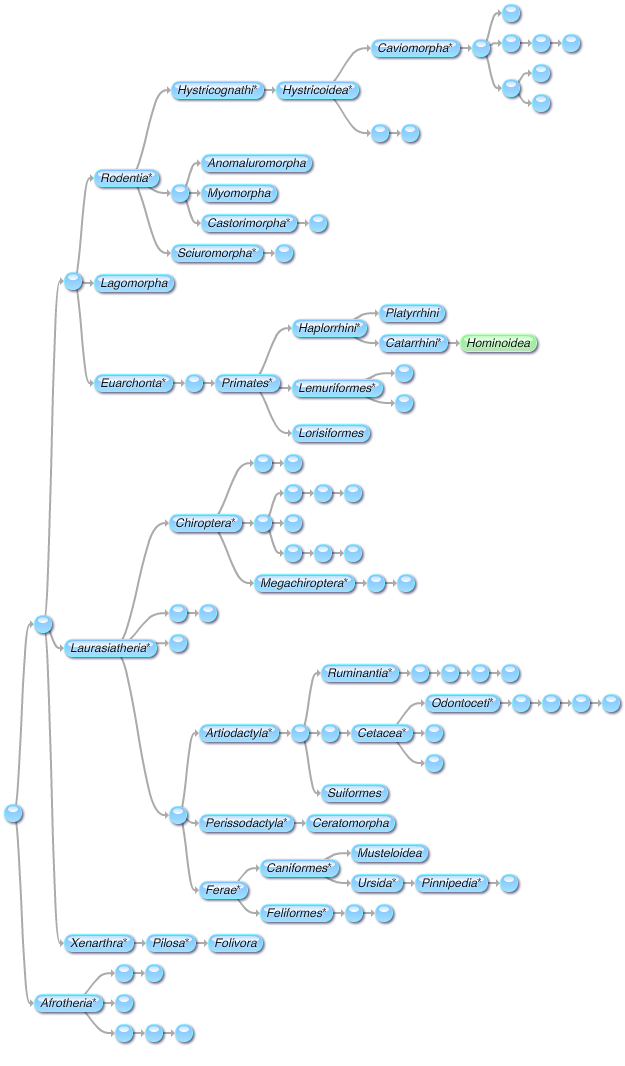So here's an example where nodes may have multiple parents. This is a phylogeny of Biota, i.e., Life:
Eukaryotes (organisms with cellular nuclei, i.e., plants [Embryophyta, etc.], animals [Metazoa], fungi [Eumycota], and "protists") have been highlighted in yellow. Some nodes have multiple parents due to one of two phenomena:
- Lateral transfer. Many organisms (especially bacteria) are capable of acquiring genetic material from unrelated organisms.
- Endosymbiosis. Some organisms have evolved into organelles within the cells of other organisms, notably mitochondria (descended from proteobacteria related to those that cause rickets) and plastids (photosynthesizing organelles in plants, descended from cyanobacteria). In these cases, the organelle often retains its own DNA, although much of it may have leapt over to the "host's" nuclear DNA. In some cases, all of it may have leapt over (as with mitochondria descendants like mitosomes).
Both lateral transfer and endosymbiosis are considered valid forms of descent in this hypothesis.
Here's the graph coarsened one step:
We can see the general patterns more clearly here. Eukaryotes share a relationship with archaeans, but also have descent from proteobacteria (via mitochondria). One clade of eukaryotes (Plastida) is also descended from a basal form of cyanobacteria (via plastids). A few cases of lateral transfer are visible, but not in detail. We can also see there there is a lot of bacterial diversity, although the details are not spelled out.
Here's the graph coarsened another step:
The endosymbiosis is made even clearer, although most other relationships are obscured.
Disclaimer: This hypothesis was cobbled together from a number of sources and does not represent any rigorous research on my part. I suspect parts of it are outdated, but this area of the Tree of Life is not my bailiwick. I just wanted to throw something together for a demonstration.









